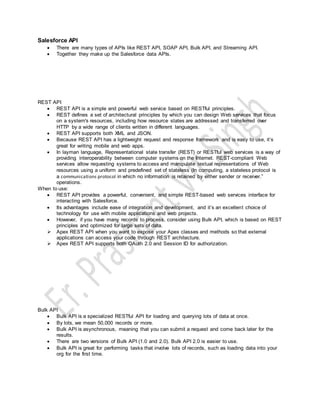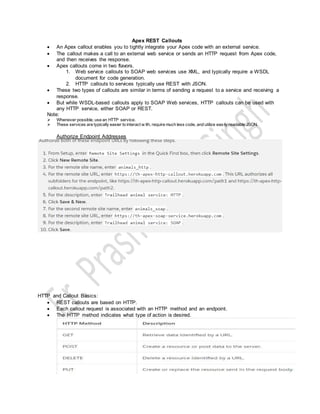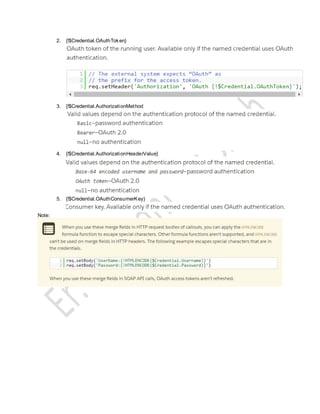The document discusses various Salesforce APIs including REST API, SOAP API, Bulk API, and Streaming API. It provides details on when to use each API and how to make calls to external APIs from Apex. REST API is recommended for most use cases due to its simplicity. Named credentials can be used to streamline authentication for external API calls from Apex.










